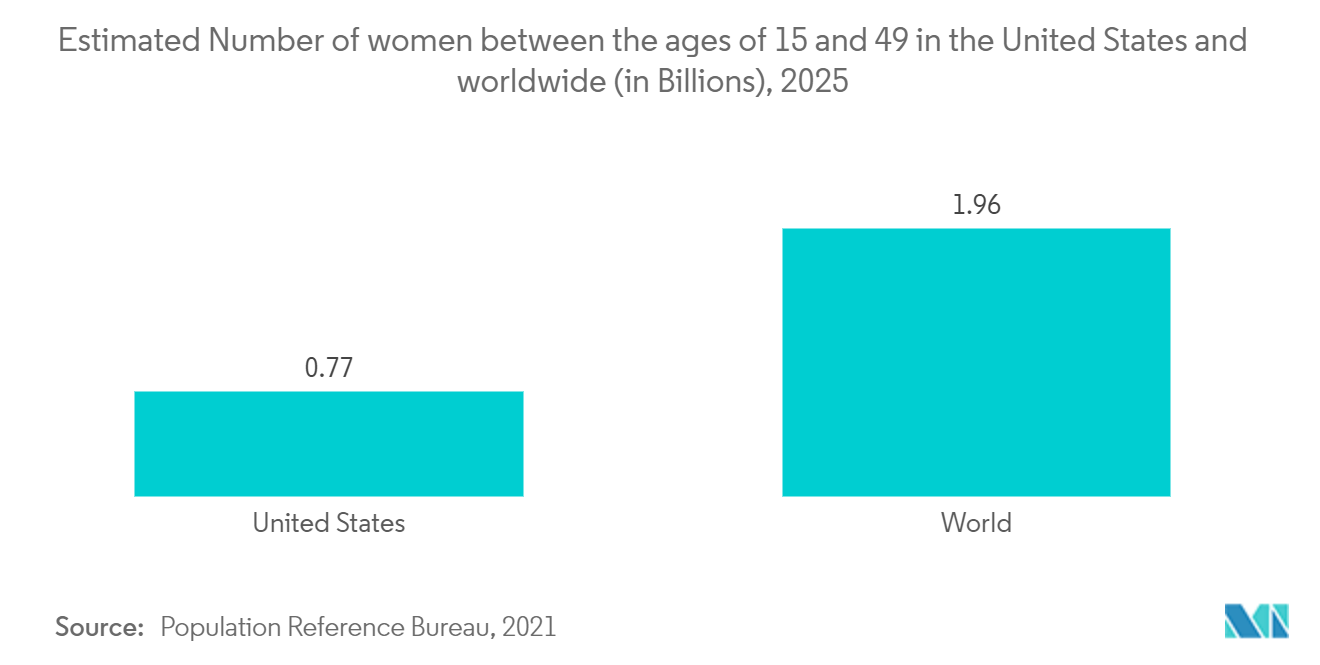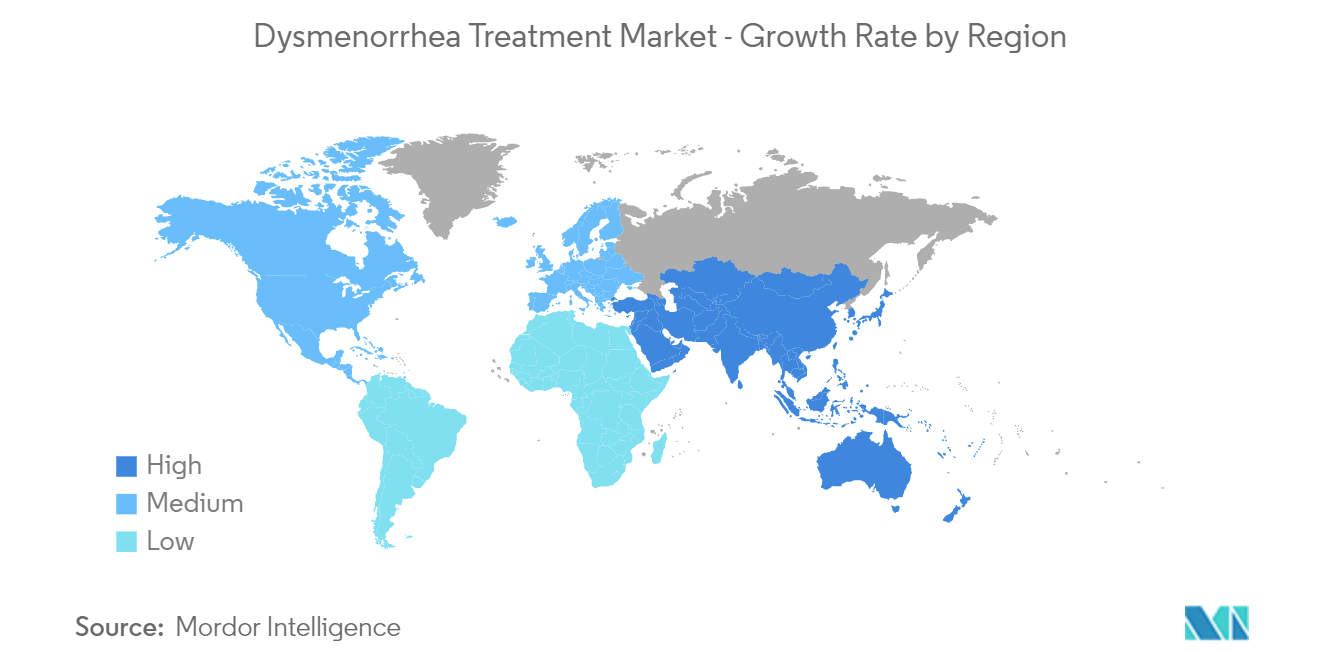Market Trends of Dysmenorrhea Treatment Industry
The Non-steroidal Anti-inflammatory Drugs Segment is Expected to Hold a Major Market Share in the Dysmenorrhea Treatment Market
Over-the-counter pain relievers, such as ibuprofen (Advil, Motrin IB, others) or naproxen sodium (Aleve), at regular doses starting the day before you expect your period to begin can help control the pain of cramps. Some of the US FDA-approved NSAIDs for the treatment of dysmenorrhea are diclofenac, ibuprofen, ketoprofen, meclofenamate, mefenamic acid, and naproxen.
According to an article published in the Women's Health Concern and British Menopause Society in December 2020, approximately 80% of dysmenorrhea women experience period pain at some stage in their lifetime. In 40% of women, period pain is accompanied by premenstrual symptoms, such as bloating, tender breasts, swollen stomach, lack of concentration, mood swings, clumsiness, and tiredness. Therefore, dysmenorrhea should be treated in its early days, which is expected to increase the usage of NSAIDs and drive the segment's growth.
Additionally, as per a research article by UpToDate last updated in February 2022, NSAIDs can more effectively treat dysmenorrhea-related pain. Approximately 80 trials reported that NSAIDs were more effective than placebo for patients with primary dysmenorrhea. In August 2022, Bayer demonstrated the data showing that a single maximum non-prescription dose of Aleve (naproxen sodium) provided more pain relief over 12 hours than acetaminophen for menstrual cramps due to primary dysmenorrhea. Thus, the high efficacies of NSAIDs are readily driving the adoption rate of NSAIDs, which may boost the market's growth.
Moreover, the prevalence of diseases such as endometriosis, which is the leading cause of secondary dysmenorrhea, is also rising globally. According to an article published in July 2021 by WebMD, endometriosis affects an estimated 1 in 10 women during their reproductive years, which is approximately 176 million women worldwide. This factor is expected to have a significant impact on the market's growth.

North America is Expected to Hold a Significant Share in the Market During the Forecast Period
North America is expected to hold a major market share in the dysmenorrhea treatment market. The United States is expected to contribute to this growth significantly due to the increasing incidence and prevalence of dysmenorrhea and awareness of dysmenorrhea among women. According to the statistics published in November 2020, Simmons Winter NHCS 12-Month, 31.31 million women in the US reported menstrual / period pain or pre-menstrual syndrome (PMS) in 2020.
Moreover, the launch of new products for treating the pain associated with primary and secondary dysmenorrhea is also driving the studied market. For instance, in May 2021, it was announced that the U.S. FDA approved Myfembree (relugolix 40 mg, estradiol 1 mg, and norethindrone acetate 0.5 mg), the first once-daily treatment for the management of heavy menstrual bleeding associated with uterine fibroids in premenopausal women, with a treatment duration of up to 24 months.


